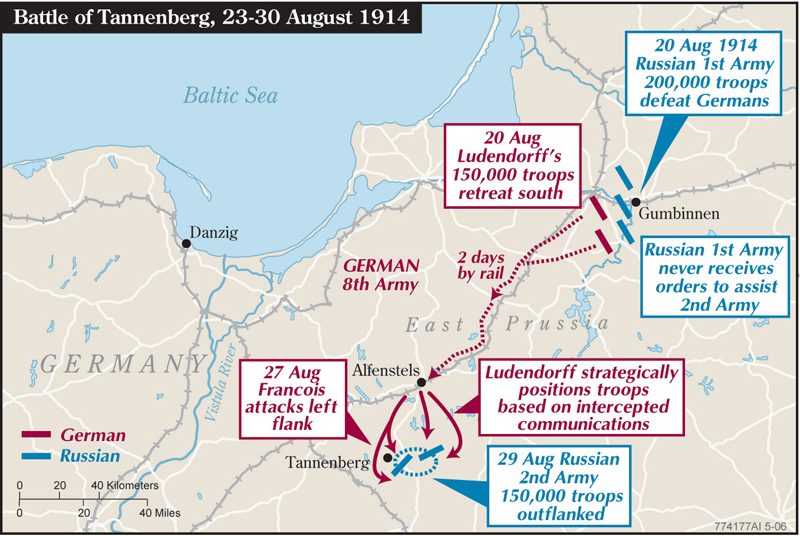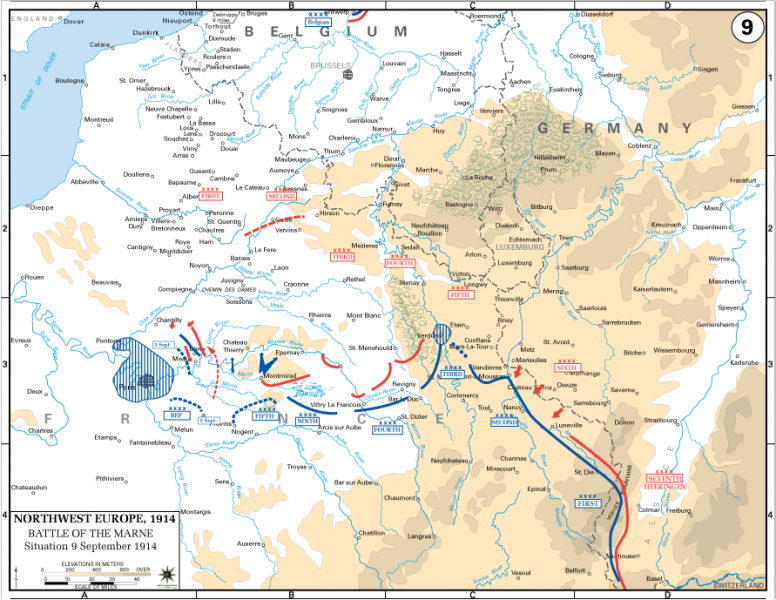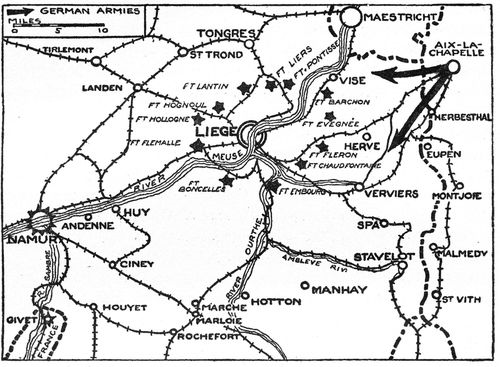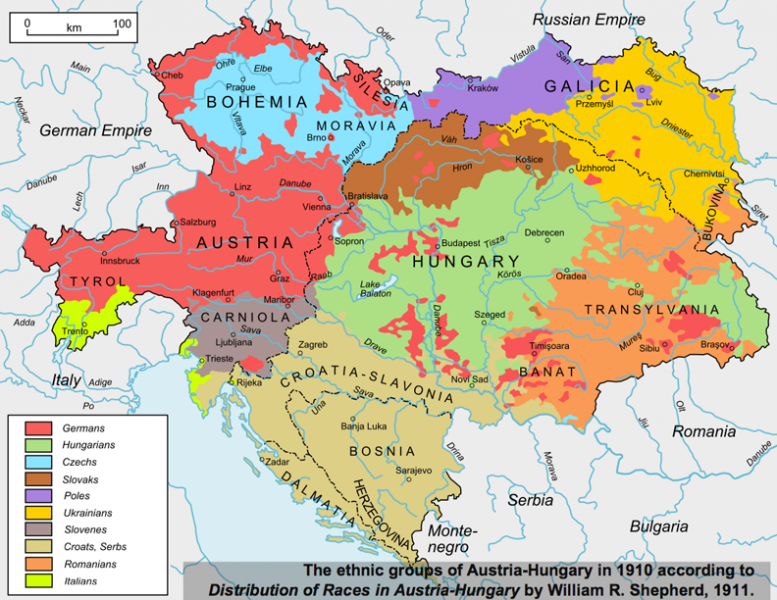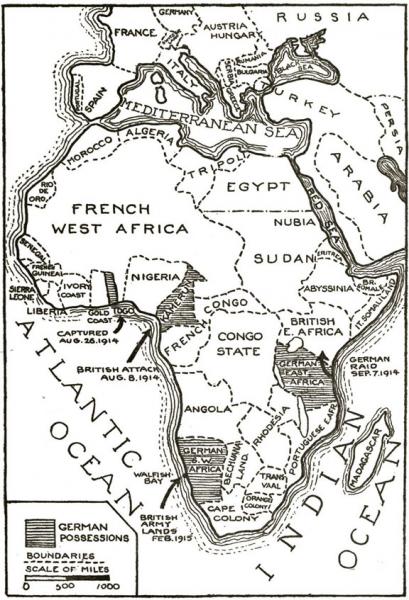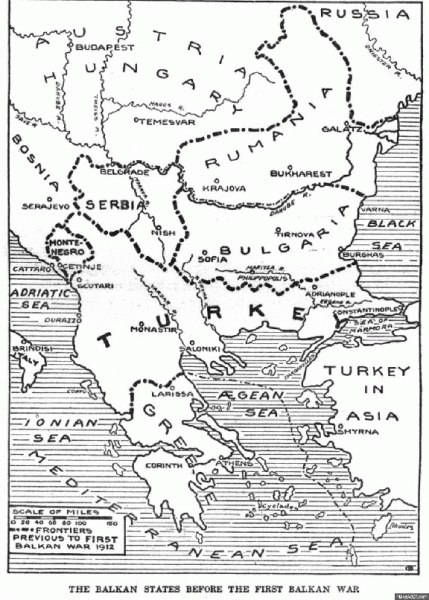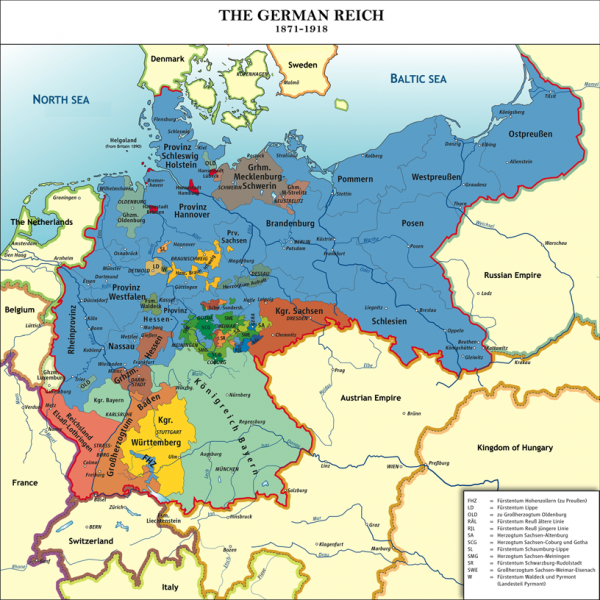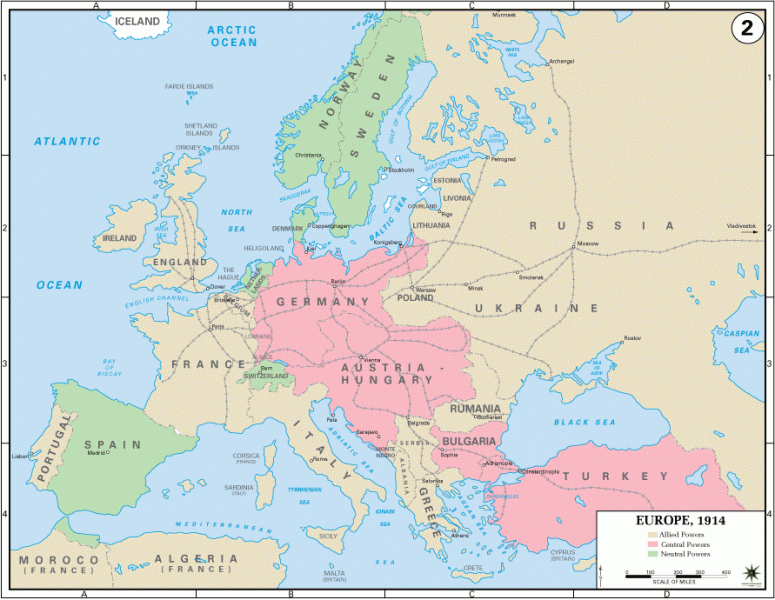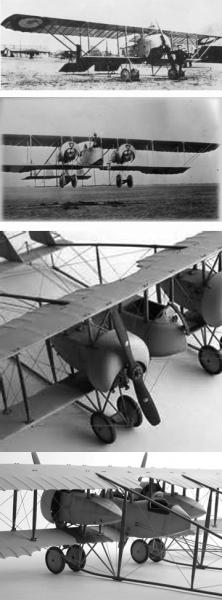-
Posts
2,637 -
Joined
-
Last visited
-
Days Won
1
Content Type
Profiles
Forums
Gallery
Downloads
Store
Everything posted by Hauksbee
-
Germany routs Russia in the Battle of Tannenberg The German war plan committed the bulk of the Empire's forces to the Western Front, leaving just one German army in the East to face Russia's First and Second Armies. Combined with the defeat at the battle of the Marne, a victory by the numerically superior Russian forces could have crushed the German war effort in its crib. Instead, the Germans were victorious. The Russians scored a tactical victory at Gumbinnen, but instead of pressing the advantage, they waited for the Second Army to arrive. The Germans audaciously moved south to face the Second Army before it could combine its strength with the First. German forces were aided by exceedingly poor Russian communication security — Russian troops hadn't mastered even basic cryptography, so German intelligence was aware of how poorly coordinated the two Russian armies were. Victory at Tannenberg set the stage for a subsequent German victory over the First Army at the Battle of Mausurian Lakes. Those two wins prevented the Russians from taking strategic initiative against Germany in the East. .
-
Paris is saved in the Battle of the Marne In a sense, this September 1914 conflict was the decisive battle of the war. Germany's advance into France was halted by a combined Franco-British army on the outskirts of Paris near the Marne River and the German army was forced to fall back. In these early phases, the war was moving too quickly for the opposing armies to have much in the way of fixed positions, and the hasty defense of the Paris suburbs included reinforcements being sent to the front from the city via a rapidly assembled fleet of urban taxis. The battle was followed by the so-called "race to the sea" in which German and Allied forces tried and failed to outflank each other until the lines reached all the way to the North Sea and no more battles of manouever were possible. The stalemated Western Front with its trench warfare came next. Germany's strategic war plan — knock France out quickly so troops could be sent back east to fight Russia — had essentially failed . (When Robert E. Lee was first given command to defend Richmond, his propensity for urging his troops to dig in led to his being called "the King of Spades...a term of derision. A few years later, with the Army of Northern Virginia on the ropes, Lee administers a crushing defeat to Grant at Cold Harbor...by having his troops dig trenches and "King of Spades" becomes a term of endearment from the troops. One author marked Cold Harbor as "the end of the Napoleonic way of war". Lee's innovation would find its finest flowering in the four year slog on the Western Front. . Another writer declared that the Marne was one of the most decisive battles in history simply because it ensured that the war would go on. [Hauksbee] ) .
-
"Schrecklichkeit": the 1914 version of "Shock and Awe".
-
WWI's first battle: the attack on Liège The German war plan called for the swiftest possible capture of Paris, hoping to knock France out of the war before Russia could fully mobilize its large but low-tech military. The fastest route to the French capital happens to run through Belgium, so the first battle of the war was a German attack on the Belgian city of Liège. Belgium was not part of any pre-war alliances and attempted to stay neutral in the war. The attack on Belgium brought the British Empire into the war, with British politicians citing their country's obligation to uphold Belgian neutrality. This was a risky move on Germany's part, but German war-planning long regarded a quick, decisive blow against France as the best possible hope of winning a two-front war. Right from the outset things did not go Germany's way. Liège (and other Belgian towns and fortifications near the Meuse River) fell, but the Belgians' determination to resist in the face of impossible odds did delay Germany's operations against France substantially, giving France and Britain critical extra days to prepare the defense of Paris. .
-
Thanks guys. 'Nice to have that cleared up.
-
Europe mobilizes for war The main participants in the war mobilized over the course of about a week. First Austria-Hungary declared war on Serbia after Serbia refused to accede to Vienna's extensive demands regarding Serbian support for anti-Austrian groups. Then Russia declared war on Austria-Hungary. This required Germany to go to war in defense of its ally. German war planning assumed that any war with Russia would expand to include war with France, and the operational plan called for attacking France first. Thus the main practical step Germany took to defend Austria was to launch a preemptive attack on France and Belgium, neither of whom had officially entered the war yet. The violation of Belgian neutrality brought Britain into the war and it was off to the races. But the literal timing shouldn't confuse you — it had long been French policy to support Serbia against Austria in hopes of initiating a war in which Russia would help France fight Germany, which was far too powerful for France to fight alone. .
-
The Schlieffen Plan required a huge number of troops. To make this happen, the Germans cleverly counted their Reserve Units in with their Front Line Divisions. The Front Line units were young: 18-25. The Reserve Units were late-20's to mid 30's. Reserves were considered inferior by most of the armies of the world, and considered fit only for garrison duties and rear echelon support. Germany realized this was false and threw them into the front line. But Schlieffen had cautioned "Let the sleeve of the last man on the right brush the English Channel". With a mass of men this large, it was tempting to filch some here, some there for other duties, such as holding back the Russians in the east. And the Kaiser's young Crown Prince, who was in command of the left flank chafed at fighting a defensive war. He wanted to attack, and garner some military glory of his own. He demanded extra troops. As Barbara Tuchman put it, "the spectre of a double-envelopment constantly danced before their eyes" The Schlieffen Plan got watered down. By early September the Germans were exhausted and had out-run their supply lines. They paid for it on the Marne.
-
Watching a YouTube segment on the Luftwaffe, the narrator pronounced Udet's name as 'Oo-day'. Is this correct?
-
Franz Ferdinand is assassinated Austro-Hungarian Archduke Franz Ferdinand arrived in Sarajevo, then part of the Habsburg dominion, on June 28, 1914. He was joined in the city by seven Serbian terrorists there to kill him, in hopes of removing a prominent moderate from the line of succession and heightening the tensions between Vienna and its South Slavic subjects. The first assassin was standing near a policeman and didn't use his weapon. The second assassin tossed a grenade that injured several people. The motorcade then continued past the other assassins, none of whom acted as they lacked clear shots in the commotion. The assassins believed their plot had failed. Franz Ferdinand ordered his car to turn around so he could visit people injured by the grenade but his driver misunderstood, and continued on the original route where, while attempting to turn around, his car stalled. By chance, Gavrilo Princip had by this time moved over to Franz Joseph Street and he was able to take the fatal shot. (Apologies for this map. It was an animated .gif in the original article. [Hauksbee]) .
-
Ethno-linguistic map of Austria-Hungary The House of Habsburg ruled Austria continuously from the 13th century through to the end of World War One. At various times, their domain included everything from Belgium to Naples to Portugal to Mexico. On the eve of the war, however, their holdings had dwindled to a diverse range of central European territories known as the Austro-Hungarian Empire (or Austria-Hungary for short). This multi-ethnic imperium wasn't well suited to the nationalistic spirit of the times. Serbia wanted to incorporate the empire's Serbian- and Croatian-speaking territories into its own kingdom, a move that Austria-Hungary saw as a fundamental challenge to their core governing ideology: Habsburg dynastic legitimacy trumps ethnic nationalism. .
-
The German and French war plans emphasized attacks German and French war planners both believed the war was going to be an offensive one. The German plan, conceived by strategist Alfred von Schlieffen, envisioned a rapid German march primarily through Belgium into French territory. The French strategy, Plan XVII, sent French troops directly across Franco-German border, as well as through Luxemburg and Belgium. This partially explains where the main battle lines were during the war, but according to some historians it means much more than that. A very contentious line of scholarship holds that World War I was caused by these plans, because every state believed that the key to victory was a quick offensive strike and that a war, under those terms, could be won quickly and comparatively cheaply. As in so many cases, the best minds of the day had it all figured out; it was going to be easy. A quick knock-out blow. A cake walk. One of the truest maxims of war is that "No battle plan survives first contact with the enemy". (Hauksbee) .
-
European powers carve up Africa From 1881 right up until World War I, European countries competed to colonize as much African land as they could. Britain and France seized the largest parcels of territory during this so-called "scramble for Africa." German leaders concluded that their lack of naval power hampered their ability to compete in the race for colonies, and thus global influence. This was one of several factors that prompted the Kaiser to begin rapidly growing his fleet. That damaged British-German relations, as the great source of British strength was its naval superiority. Germany challenging that seemed like an existential threat. Colonialism, then, helped cause a destabilizing naval arms race between the two powers. And by bringing European problems to Africa, it also set the table for a truly global war .
-

Map 38: Some damned fool thing in the Balkans...
Hauksbee replied to Hauksbee's topic in WOFF UE/PE - General Discussion
Care to expand on that? -
Two wars in the Balkans fail to settle regional rivalries The Balkans, the area around the Aegean Sea in the Southeast of Europe, was one of the continent's most volatile regions in 1914. The Balkan states fought two separate wars between 1912 and 1913. Serbia, Greece, and Bulgaria had claimed territory from the embattled Ottoman Empire, but they had also been at each other's throats. The wars expanded Serbia and built an independent Albania, but none of the most important powers were happy. Serbia was furious with Austria-Hungary, which had recently annexed Bosnia. For Austria-Hungary's part, it wanted more vigorous backing from Germany. And Russia was committed to deeper support of Serbia, its client state. .
-
The unification of the German Empire The Franco-Prussian War, 40 years before World War I, birthed the unified German state. Prussia baited the French into launching a war, and then aligned with several small German states to decisively defeat France and seize the economically valuable Alsace-Lorraine province. The unified Germany that emerged from the war instantly became one of the most powerful states in Europe, overturning the continental balance of power. Germany's rising power alarmed Britain and Russia, drawing both countries into closer alignment with their long-time rival, France. .
-
True. There weren't that many players in the game. When you count up the Triple Entente, add the Central Powers, (or Triple Alliance) you've accounted for everyone that matters in Europe.
-
'Ran into this today. Most of the maps are pretty good. I'll post one a day. European alliances in 1914 Immediately prior to the war's outbreak in 1914, Central Europe was dominated by two powerful states: Germany to the north and its weaker cousin, the Austro-Hungarian Empire, to the South. The two countries formed the core of the Central Powers, also known as the Quadruple Alliance because they were joined after war began by Bulgaria and the Ottoman Empire (modern Turkey). The other major pre-war alliance was the Triple Entente, a pact between Russia, Great Britain, and France (called the Allied Powers during the war). These alliances set the stage for a massive war: any dispute between two members of these blocs could pull in all of the others, as the treaties committed these states to defending their allies. And that's exactly what happened. .
-
...and Nurse Gladys.
-
Has anyone found any accounts of what it was like to fly? It has the look of a plane with many 'quirks'. This would be good to know prior to getting it in the game. We might have to fly what we wish for.
-

Boche Run Out of Steam! Victory on the Marne!
Hauksbee replied to Hauksbee's topic in WOFF UE/PE - General Discussion
Good point. The phrase "A certain kind at a certain time" comes to mind, and when the time passes, the kind changes. Witness the Scottish Renaissance of the 1800's, Egypt of Seti I/Rameses II, Elizabethian England, the Italian Renaissance, America between the end of the Civil War and 1900, Napoleonic France...all cultures that experienced a great burst of political (and creative) energy. Add to that, Victorian England. A list of quintessential American Characteristics made prior to the Civil War would have to be seriously amended by 1900. . The failures of leadership that Captain Vengeur points out were, in large part, examples of 'changing times'. Men of wealth and influence in their communities who raised companies were given command. Utter lack of military experience was no bar to holding a Colonelcy. These men also had a very prickly sense of personal honor. No wonder there was much bumbling. In addition their conception of war was formed prior to the railroad, the telegraph, and the observation balloon. They estimated fire power in terms of muskets, not rifled barrels (and, in the end, repeating rifles). . Changing times changed everything, and conceptions of national character change with it. -
In my profound ignorance of WWI French aircraft (apart from the Nieuport fighters) I offer this for others like me: . The French developed one of the first dedicated bomber aircraft. It looks fragile to a modern eye but it was a successful design. The Caudron G.4 was a biplane with twin engines, widely used during World War I as a bomber aircraft. It was designed by René and Gaston Caudron as an improvement over their Caudron G.3. The aircraft was no delight for the eye with its massive, open construction. The aircraft employed wing warping for banking. The first G.4 was manufactured in 1915, both in France, England and in Italy. The Caudron G.4 was used as a reconnaissance bomber into the heart of Germany. Later, when Germany developed a fighter force, the aircraft had to be used for night bombings
-

Boche Run Out of Steam! Victory on the Marne!
Hauksbee replied to Hauksbee's topic in WOFF UE/PE - General Discussion
Could you elaborate on this? -

Boche Run Out of Steam! Victory on the Marne!
Hauksbee replied to Hauksbee's topic in WOFF UE/PE - General Discussion
I did a Yahoo Search for 'Battle of the Marne, Images' and these turned up. I know that these searches often include extraneous stuff, but I don't know what the Marne looked like. The Marne was famous for the French shuttling fresh troops to the front by taxi cab. According to legend virtually every taxi in Paris was commandeered. The last pic. looked like a mix of taxis and buses. -

Boche Run Out of Steam! Victory on the Marne!
Hauksbee replied to Hauksbee's topic in WOFF UE/PE - General Discussion
It is said that von Schlieffen, on his deathbed, (1913 A year before the war) cautioned: "Always keep the right wing strong. Let the sleeve of the last man on the right brush the English Channel." But Moltke, et al could not resist the temptation to meddle with the plan. A vast pin-wheel movement through Belgium and Holland was envisioned. (1) But Holland's neutrality was to be honored (?) which squeezed the corridor for advancing troops, giving France a smaller front to defend. (2) The Russians mobilized faster than expected and the Junker class saw their estates in northern Germany threatened and begged for protection. Additional strength was bled off from the right wing. (3) While the right wing maneuvered, the left wing was supposed to stay in place to blunt the main French assault up through the Metz-Strasburg area. Its commander, Crown Prince Wilhelm (I think) chafed at being cut out of the glory and repeatedly demanded to take the offensive. Even more troops were diverted to him. To no avail. The constant meddling with the Schlieffen Plan. By the time of the Marne, German troops were worn down, physically exhausted and had outstripped their supply lines. Three potentially game-changing "What-if's". A most wonderful irony presents itself in wondering what would have happened if all the plans had worked out as originally envisioned? The Germans would have swept south through Holland and Belgium, then west taking Paris and all of northern France. The French would have punched through and been in control of southern Germany. Each would be in control of large parts of the others country. Each would have the opposing force in its rear and would have its supply line threatened or cut. It would have been a fine mess.


